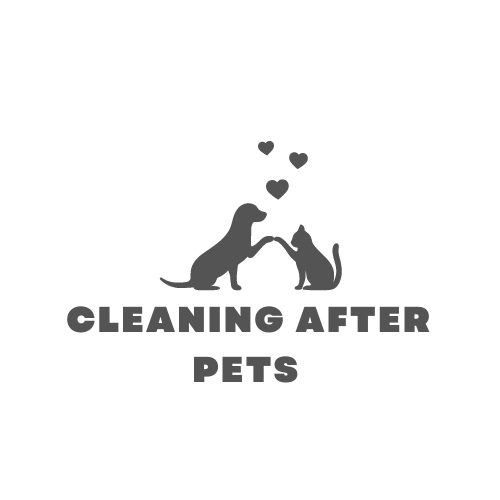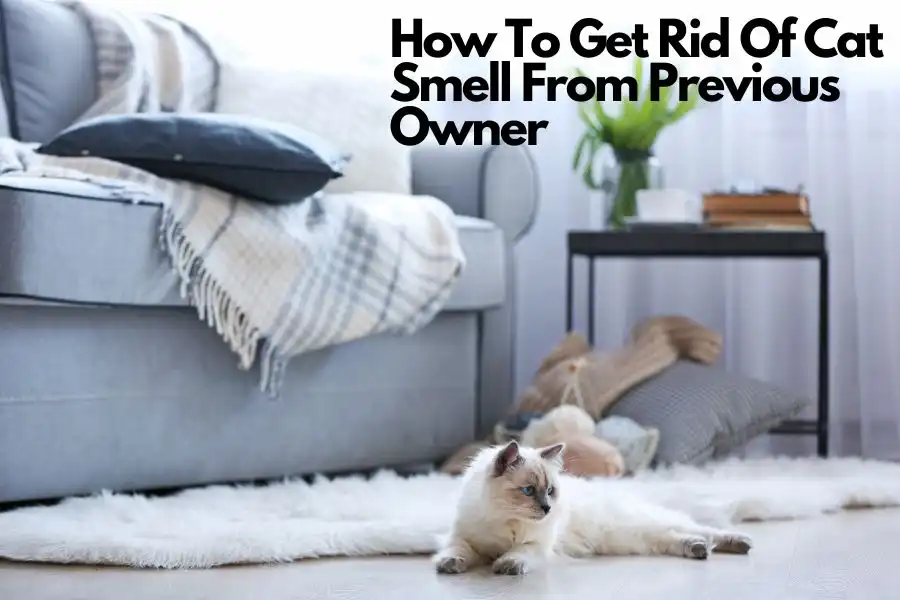There is little more frustrating than having your newly acquired house smell of cat urine, cat litter, or hair. The smell is powerful and repulsive enough to make you uncomfortable in your own home. Consequently, you must pull all the stops to eliminate the cat smell from the previous owner.
Unfortunately, having taken over the house from a past tenant or owner, it may prove exceedingly challenging to nail down the exact source of the smell.
Often, the culprit might be the walls, wallpapers, furniture, curtains, carpet, carpet padding, or the wood beneath the carpet. However, as a foul scent permeates the house, it becomes challenging to identify the exact source.
We will explore how to get rid of cat smell from previous owner and not just mask the scent using everyday air fresheners (air fresheners only offer a short-lived solution that proves ineffective when the pee is exposed to a bit of humidity in the air during the summer).
Using neutralizing scents from candles and essential oils for pet scents will also not help in the long run.
What Makes Cat Urine So Potent?
Cat urine smell potency emanates from the myriad of compounds that constitute the urine. Cat pee contains ammonia, urea, and metabolic by-products that decompose to release a foul odor. Regular cleaning in the immediate aftermath of a cat soiling the carpet, floor, walls, fabrics, couch, or any other part of the house will dissipate the foul odor.
Sometimes, the stale ammonia-esque smell does genuinely disappear for a short time, only to return later during a humid day (especially during the summer). Humidity allows uric acid crystals to reconstitute, allowing bacteria to restart their decomposition.
It is why many fail to notice the cat odor during the house inspection tour, only to get disappointed once they have moved in.
In most cases, the cat scent is concentrated where the litter boxes are kept, e.g., in the garage.
We will show you how to get the smell from the walls, carpet, and subfloor.
How To Get Rid Of Pet Odors Left Behind By Previous Tenants Or Property Owners: Easy Solutions
Are you buying a house that smells like cat urine? Have you recently signed a lease agreement but are yet to move due to the cat smell? Let’s explore how to get rid of feline smell from past occupants.
Open The Windows To Air out And freshen Up The whole house
Letting fresh air (and sunlight) into your house should be your first step. If the first thing you smell when you walk into your new home is cat smell, letting in fresh air will do you a world of good.
Open the windows as often and as much as possible. Additionally, ensure the windows are open while you’re cleaning your home.
Use A Blacklight To Find Urine Spots
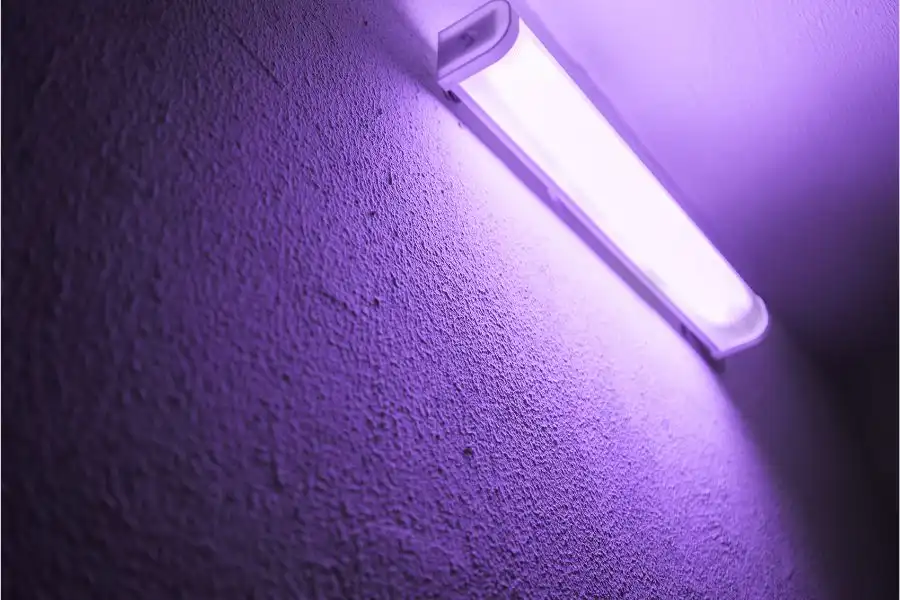
You cannot scrub urine spots if you cannot identify where they are. While your trusted nose will help you locate some spots, it might not be sensitive enough to locate all urine spots in a house infested with cat urine.
A better means of locating urine spots in your new house or apartment is to use black light. Darken the room you want to inspect and turn on the black light. Shine it on the surfaces you want to inspect, including the floor, rugs/carpets, curtains, drapes, etc.
Clean Your Carpets
1. Use An Enzymatic Cleaner
Your number one solution to remove cat odor left by a previous tenant should be enzymatic cleaners. Enzymatic cleaners break down the urine, eliminating the pungent smell’s source.
Ensure you follow user guides and instructions. However, most enzymatic cleaners require you to give the enzymatic cleaner enough time to work. Grab your preferred enzymatic cleaner and douse the problem area.
Let it sit in place for the required time before blotting, drying, or vacuuming the spot.
Repeat as many times as necessary to get rid of the odor.
As you can imagine, clearing cat urine odor over large areas using enzymatic cleaners can be expensive. If you find the urine is on a large area of your carpet and rugs or on many different carpeted areas around your house, consider using the alternative below.
2. Can Vinegar Get Rid Of Cat Odor From Carpet?
It depends on the seriousness of the cat’s urine stain and smell. As such, it is best if you are always prepared to use other methods and products or complement them with other cleaning methods, such as enzymatic cleaners, ozone generator machines, and wood primers for the subfloor areas.
You should also note that cleaning cat pee stains using vinegar (as with ammonia-based cleaners) can attract your cat to pee around its dwelling (if you have one) to remark in the same spot due to their strong smells.
Step #1: Mix equal parts white vinegar with water in a spray bottle. Please test it out on a hidden area of the house before spritzing on any conspicuous parts. If it does not discolor the yarn and fabric, you can go on to clean the soiled part.
Step #2: Let the vinegar-water concoction sit for about 15 minutes. Lightly scrub the carpet to lift the dirt and help the cleaning mixture reach deeper into the fabric.
Step #3: Blot up the solution to dry the spot. If you have a wet vacuum, suck as much of the water-vinegar solution that’s remaining.
Reapply the cleaning concoction as many times as needed to get rid of the urine stain. Air out the affected room as much as you can.
3. Use A Carpet Cleaner/Shampooer
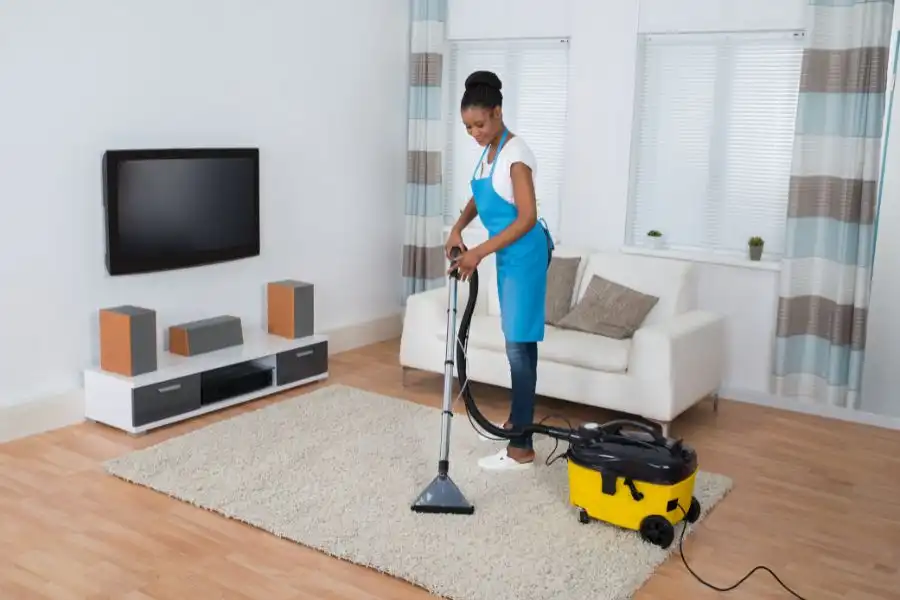
A carpet shampooer such as the Hoover Cleaner is an essential addition to your cleaning tools if you have pets or kids in your home. It makes cleaning a lot easier.
Most rug cleaners use detergent (in this case, pet urine detergent) and water. As such, fill your carpet cleaner with a detergent that can eliminate pet urine, such as the Hoover Paws & Claws Deep Cleaning Shampoo.
Clean the soil part and allow it to dry completely before allowing traffic back into the affected area.
4. How To Remove Cat Odor In A Carpet Using A Steam Cleaner
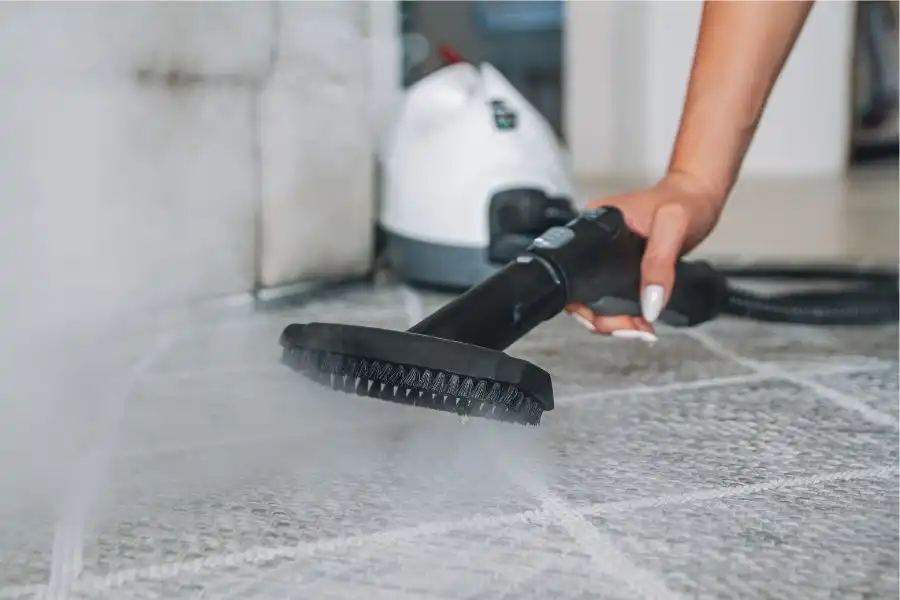
Pro Tip: Avoid steam cleaning fabric before using enzymatic cleaners to eliminate the cat pee stain. This is because the heat is likely to strengthen the bonding between proteins in the urine and carpet fiber, permanently impressing the stain on your carpet.
You need to eliminate as much of the stain using enzymatic or DIY cleaners before you go for a steam cleaner. You may need to clean or treat the affected area several times if you are dealing with stubborn stains and scents.
When steam cleaning carpets, use specialized shampoo and hot water. Run the sprayer repeatedly over the pee spot while scrubbing. Allow the steam to permeate deeply into the yarn before suctioning it out.
5. Getting Rid Of Cat Odor From Carpet Padding
Sometimes, the situation might get dire, especially in cases where urine has permeated sub-floor levels like the carpet padding or the wood below. Padding is a sponge-like material installed between the carpet and the subfloor to improve walking comfort.
Unfortunately, being a sponge-like material also means the padding soaks you and holds onto cat urine.
Where the padding has soaked up cat urine, you must remove the carpet to expose the padding. Afterward, you can clean off the stain using appropriate methods, as explained below.
Using A Disinfectant Or Enzyme Cleaner To Get Rid Of Cat Odor From The Carpet Padding
Once you expose the stained spot on the padding or the subfloor, prepare to clean and treat that spot using an appropriate and effective product like an enzyme cleaner or disinfectant remover like the OdoBan.
As mentioned earlier, vinegar or baking soda can be effective when dealing with specific stains, depending on the severity of the cat pee stain. You can give these DIY cleaners a try before using store-bought cleaners.
However, many pet specialists and parents do not advocate using vinegar or baking soda. Due to their strong smells, they are likely to stress the cat and influence its behavior, causing it to remark on the same spot again.
Often, a cat sprays around their dwelling because it feels threatened or sick and wants to mark its territory using the pheromones in feline urine. If you have a cat, it might mark or pee on the spot if you clean it with strong-smelling DIY ingredients such as vinegar.
On the other hand, many property owners involved in the flipping of run-down apartments swear by using industrial disinfectants. We have received many first-account testimonies praising OdoBan. They are vastly experienced in cleaning some of the dingiest of premises.
After all, if you flip old houses, you have to know how to remove the pet smell from the past owner before selling the property.
Besides its efficacy, OdoBan is affordable, has a neutral pH, and is safe for use on almost all types of carpets. However, ensure you carefully read and follow the instructions before use.
Depending on the extent of urine toxicity, you may have to treat the padding multiple times until the scent is completely gone.
6. Pull Out The Carpet
Ultimately, you might be unable to rescue the carpet. The balls of hair and deep-soaked urine might be impossible to remove completely. Since you’re moving into a new home, you might consider investing in new carpeting.
A new carpet will give you clean slate flooring without pet soiling and the associated pet odor.
If you’re moving to a rented home, you might not have the leeway to replace the carpeting as per your lease agreement. You should contact your landlord to re-carpet the affected areas before moving in, especially when thorough cleaning does not suffice to eliminate the pet odor.
Cleaning The Furniture
1. Clean The Upholstery And Fabrics (Especially, Drapes)
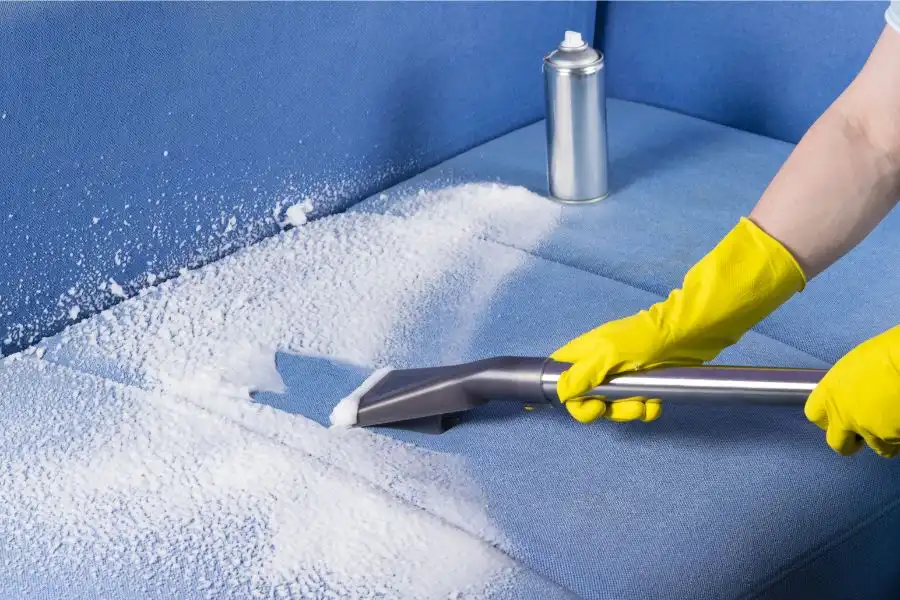
Start by locating where the urine stain is and where the odor is likely coming from.
The best way to locate a pee stain is to use a black light at night or UV light to shine over a surface and find feline urine stains; they usually appear like a mass of pale yellow, and you can mark or outline them using chalk.
After that, use a combination of an enzyme cleaner and steam cleaner to get rid of the stain permanently. However, if you feel you’re not equipped to clean wee spots on your couch and want to retain the furniture, consider contracting professional cleaners.
2. Dispose Of Old Fabric And Furniture
Get rid of all old and leftover curtains, wallpapers, carpets, furniture, and any other absorbent surfaces likely to soak in cat urine you don’t want to retain. After many years of exposure to cat urine, most absorbent materials easily continue to give off a strong cat odor despite being cleaned thoroughly.
When you move into a new home with furniture infested with pet scent, you might be better off investing in new furniture.
Eliminate Of Cat Urine Odor On Wooden Surface
Though it might not seem like it, wood does assimilate odor from its surroundings fairly easily. If a cat ever pees in a closet or cupboard, you can guess that the urine smell will linger for a long time. You can use the solutions below to get rid of cat wee smell:
1. Using A Wood Primer
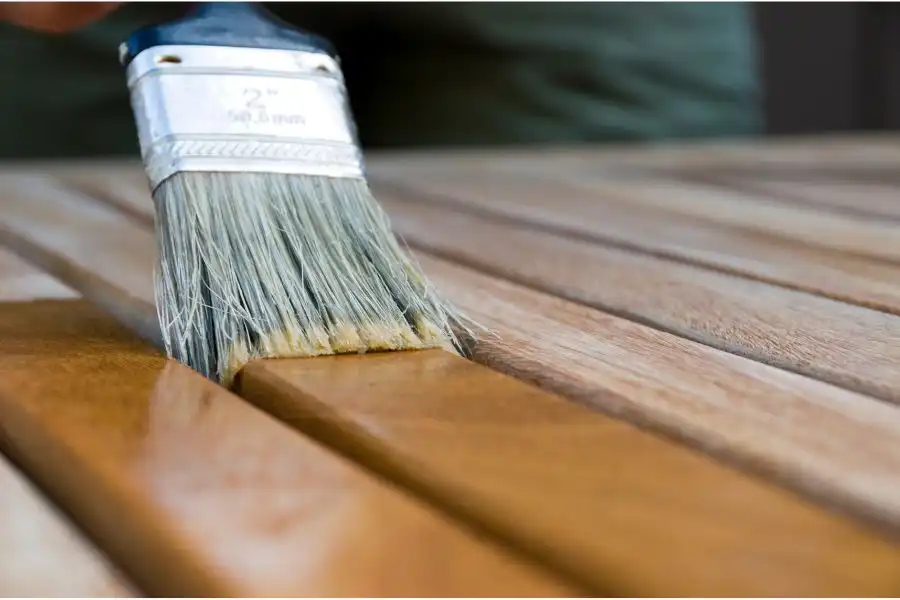
A suitable wood primer can completely cover and eliminate feline urine stains and odor on wood surfaces. For instance, the B-I-N Water-Based Stain Blocking Primer/Sealer is an effective pet urine stain killer, ideal for interior surfaces such as ceilings, walls, and doors.
Once applied, it permanently blocks the urine stains from animals and pets like cats and dogs. Luckily, the primer is inherently easy to work with as a DIY project.
It only takes about 20 minutes to dry, and you can apply another coat after 45 minutes after painting the initial coat.
Another alternative is Kilz Primer, a latex-based primer for cat sealing in urine. It is a form of paint that can resist cat urine stains. The primer takes a few minutes to dry and completely conceal light and medium wee stains.
2. Paint The Wood
You can go one better and paint the wood. After applying the primer, you can paint the wooden surface with paint that will seal the urine stain completely.
Getting Rid Of Cat Urine On Your Floors And Subflooring
1. Stain And Seal Your Floors
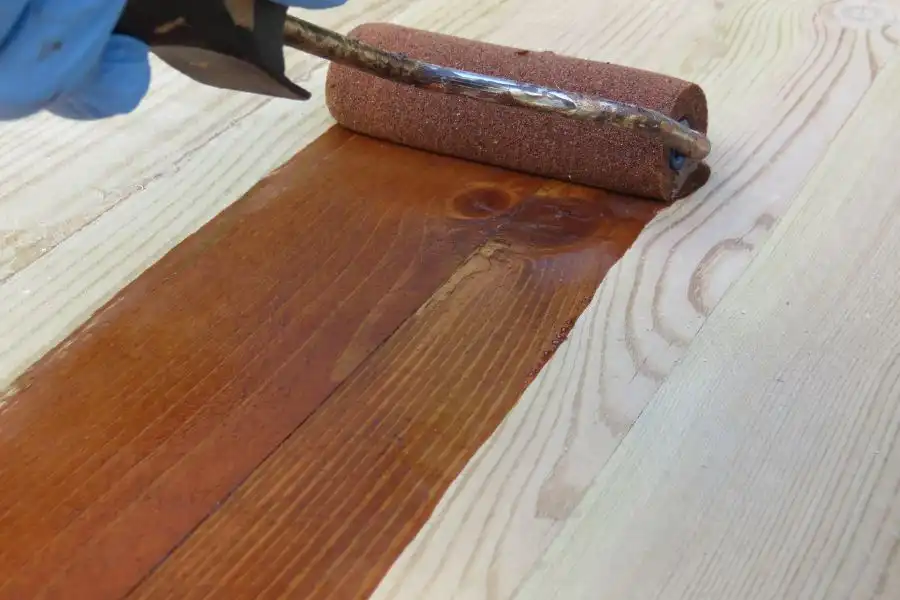
When dealing with urine odor from your floor that will not dissipate no matter what you do, consider staining and sealing the floor.
Refinishing your wood, tiled, concrete floor, or subfloor will provide a barrier between the source of the scent and your indoor space. Staining and sealing your floor completely covers the urine spot, negating the pungent scent escaping into your dwelling.
It important to note that you might be forced to re-stain or reseal the floor if the wee spot is exposed in the future.
2. Redo The Floors
In the case that the pee has soaked through the wood, concrete, tile floors, or even subflooring and stayed in place for a significant amount of time, you might have to remove the floor panels.
Cat urine that is allowed to set in for a significant period is almost impossible to remove. Such scenarios are common in rented properties where tenants might not take the necessary remedial cleaning.
While redoing your concrete, tile, or hardwood floor is an expensive solution, it is certainly cheaper and more convenient than resealing the floor every month.
Housing Wall Surfaces
If you notice a feline urine smell after cleaning your floor, carpet, furniture, and other items in your new home, it might emanate from the walls. The walls might absorb the odor if the urine stains stay in place long enough.
In other cases, male cats might mark the walls, leaving an enduring foul smell. Here’s how you deal with such cases:
1. Clean The Walls
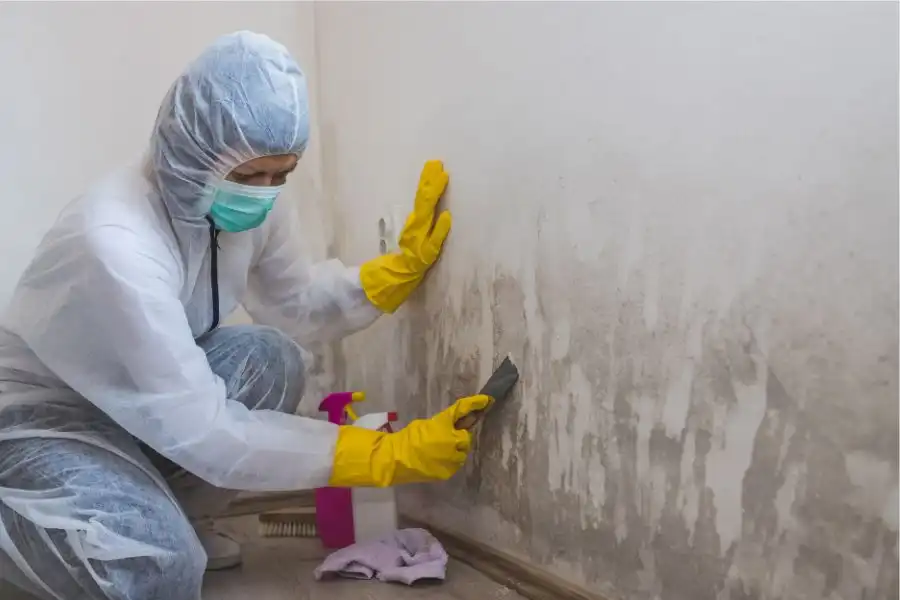
The housing walls are also frequent “culprits” and are familiar sources of cat odor. This is because male cats spray on the wall, sometimes up to a foot high.
The initial step is thoroughly scrubbing the surfaces using a suitable all-purpose cleaner. Remember to open the windows and air the space as much as possible after deep cleaning the walls and floors.
Additionally, use a suitable enzyme cleaner.
2. Seal Walls
You can seal the walls to cover the cat urine spot and smell. Purchase an appropriate seal for your wall material—concrete, bricks, drywall (like KILZ), plaster, or wood panels—and apply it as directed by the product instructions.
Alternatively, contract a professional to apply the sealing primer to the culprit walls for you.
3. Paint Your Walls
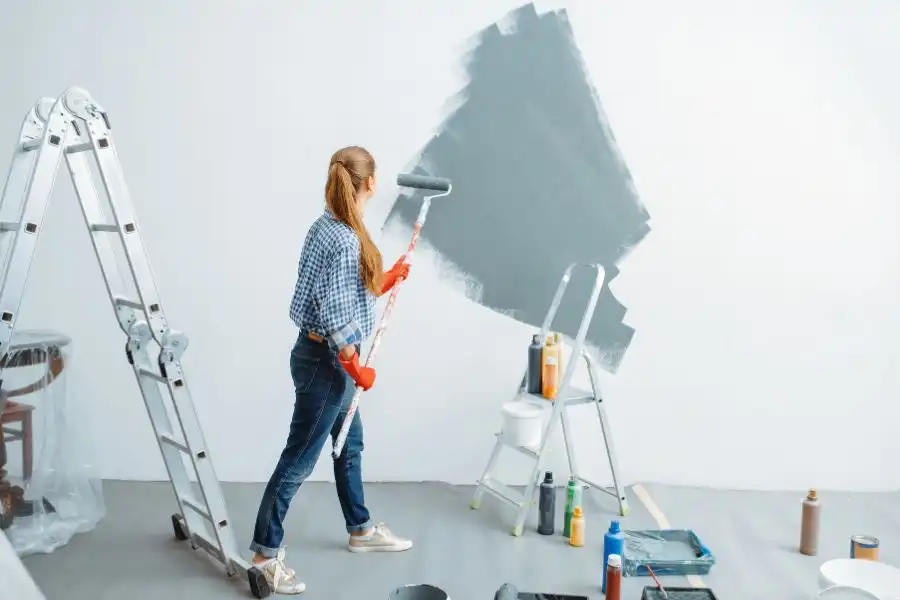
Painting the wall works similarly to sealing walls. It is especially effective when combined with sealing, as it provides an additional layer of odor-proofing, making it impossible for the smells to reek into the room.
4. Redo/Replace The Walls
For obvious reasons, this should be the last course of action. Redoing a wall is not only expensive but also time-consuming.
However, in the extreme case where the scent has dispersed and permeated through the walls of a room, and the normal cleaning and treatment do not help, you might be forced to get rid of the odor-soaked walls.
At the very least, you might have to refinish the wall.
This solution is best used for drywall, plaster, or wall woodwork. Other wall materials, such as cement or brick, are difficult to replace. However, you can refinish the wall or make do with resealing the wall.
Cleaning The Garage
We recommend using an acid-based cleaner to remove feline urine odor in the garage. However, consider resealing/repainting all the surfaces, especially if cleaning areas with widespread cat urine stains and odor.
When you use an acid cleaner, be careful not to let your pets into the space. The fumes from the cleaner might harm your dog, cat, or any other pet you have. Likewise, do not let your children access the garage until you air it out and it does not reek of the cleaning solution.
Pro Tip: Keep the cat far from concrete for as long as you are in the house. Concrete soaks in cat pee so deep that anyone will struggle to clean it using enzymatic cleaners or other products.
Eliminate Cat Hair
In most instances, when a dwelling has a pet smell, the main issue is cat urine and poop/litter. However, cat hair on carpet or furniture can explain the cat aura in your new home.
What Removes Cat Hair Scent
Cat hair scent, although to a lesser extent, is pesky and last long after the cat has left. Here is how you remove the pesky cat smells originating from cat hair.
1. Vacuuming
Vacuuming your new home is one of the best ways of eliminating cat hair (and a dander smell). Cats will shed hair and drop dander to some extent. Some cats shed more than others. You need to vacuum out the hair and dander.
While the past occupants or landlord might have carried out a deep clean of the house, if you still smell cat odor, thoroughly vacuuming will go a long way to reduce stale cat odor and make your air fresh.
Vacuum clean all the floor, furniture, stairways, windows, sills, and coverings.
2. Rubber Gloves
Cat hair has an affinity for fabrics. The hair will easily stick to curtains, couch upholstery, or any other fabric. To deal with cat hair on fabrics, follow the steps below:
Step #1: In spray bottle, dilute your preferred fabric softener and with water.
Step #2: Spray the surface of the fabric (whether curtains or upholstery).
Step #3: Wear rubber gloves and dampen the outer surface.
Step #4: Roll over the surface with the gloves and collect all the hair in one place. After that, scoop all the hair to get rid of the cat hair.
Identify the areas in your home with cat fur, more so, where the cat likes to sleep or play about; use a litter brush or a wet kitchen glove to remove cat hair from surfaces.
Cleaning HVAC Vents

Get the HVAC checked and cleaned before or immediately after you move in. The goal is to get rid of all the dust, greasy material, and odors-causing pet fur in the vents.
Some faulty ducts may need to be replaced altogether.
Also, consider buying HVAC filters with smell-neutralizing capabilities. Due to the technical demands of such a task, we recommend hiring experts to help you clean the ducts.
Conclusion
Removing cat urine smell is quite a painstaking ordeal and must be carried out thoroughly to remove all the odor. This is because cat urine has the potential to leak deep into the nooks and crannies of your housing structure, making it that much more difficult to clean.
If you buy a home that smells like cat urine, you may need to take all these steps or more to eliminate the cat litter smell and other odors in the home. Unless the cat pee is thoroughly dealt with, the unpleasant smell will keep coming up strongly, mainly when humid.
Use our cleaning methods to eliminate the cat urine smell in your new home or apartment.
Moving forward, take steps to mitigate the risk of your pet doing their business in your home.
